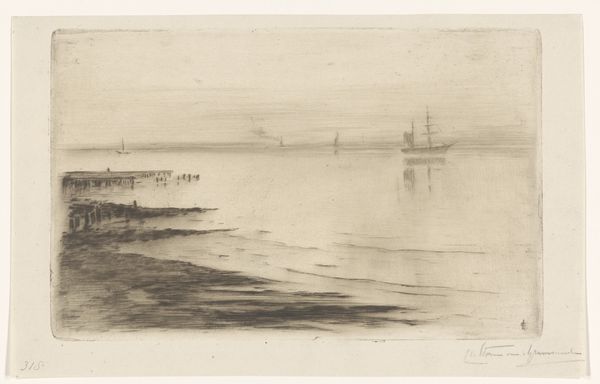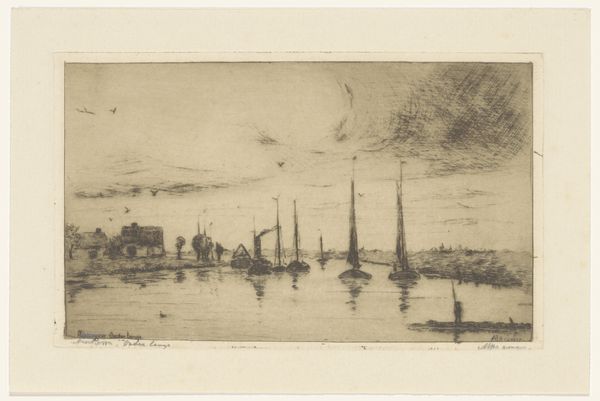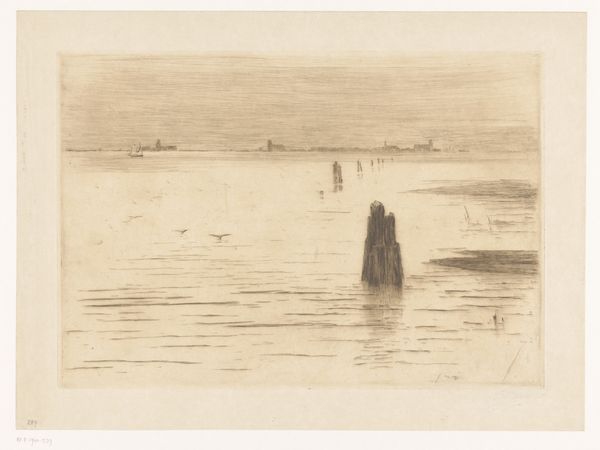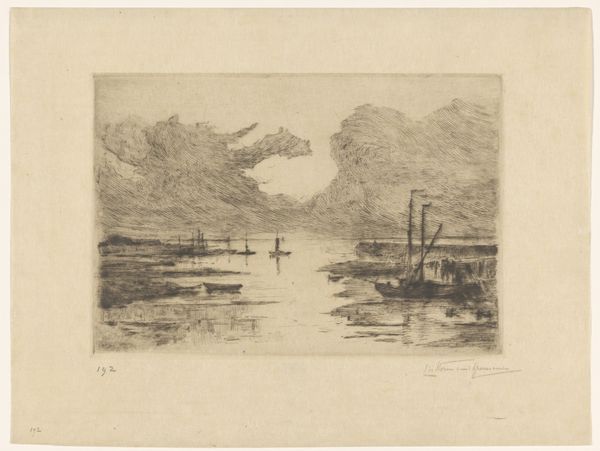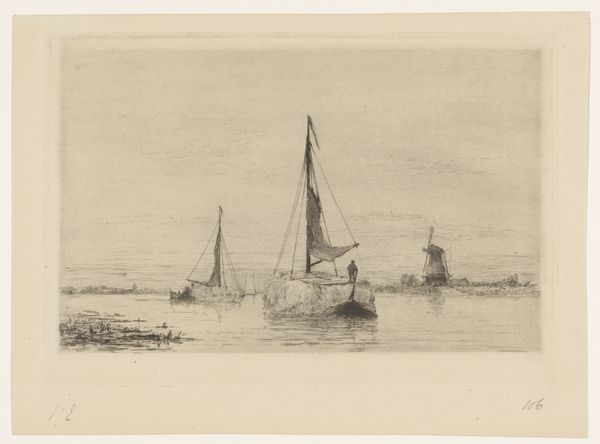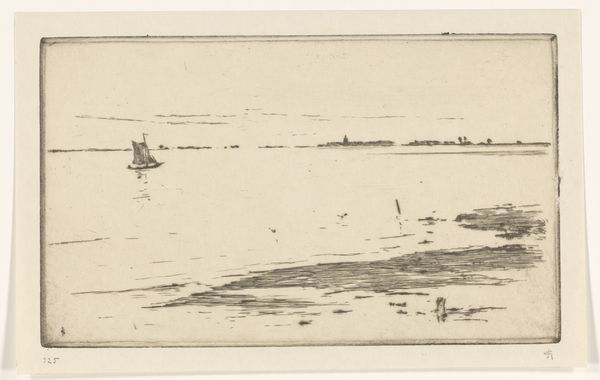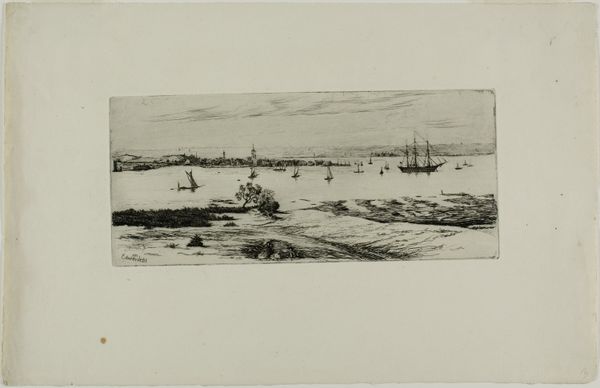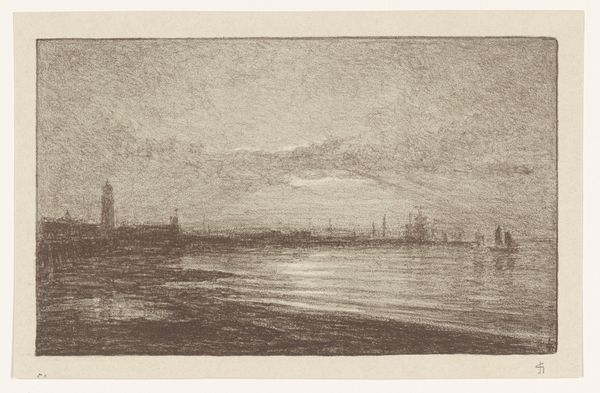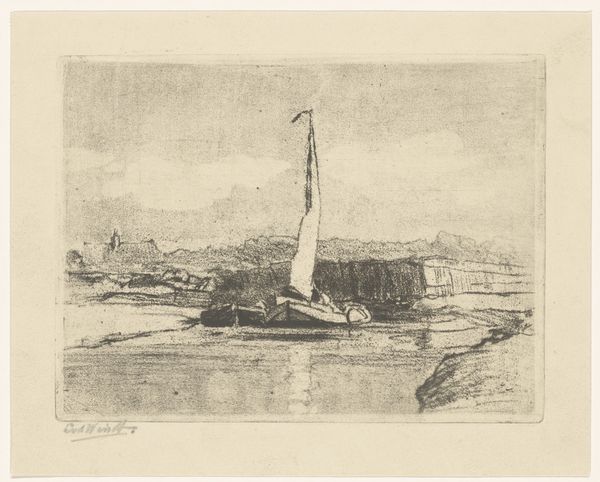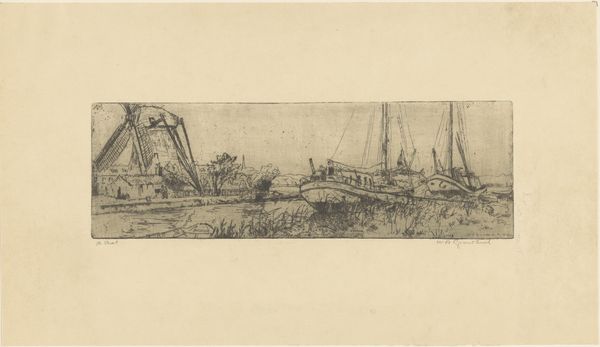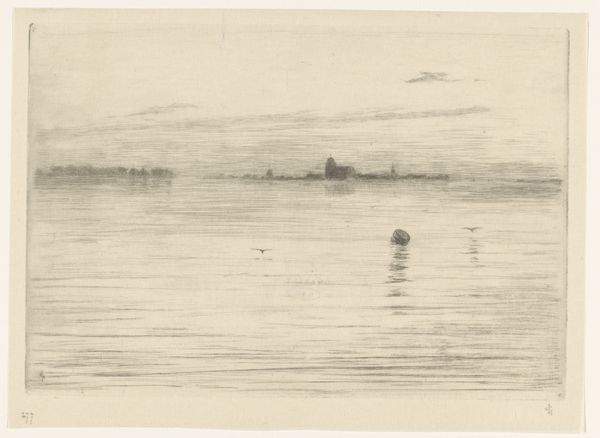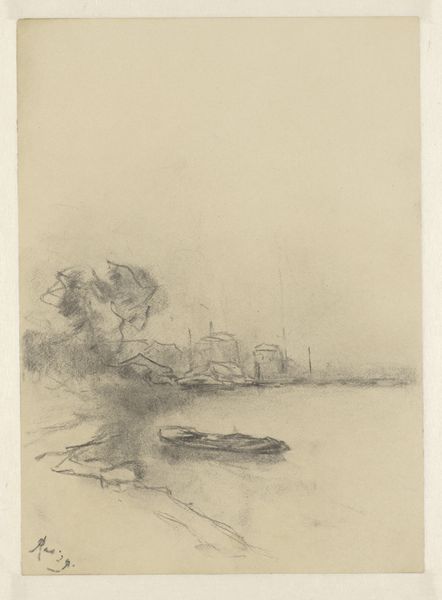
print, etching
# print
#
impressionism
#
etching
#
landscape
Dimensions: height 160 mm, width 251 mm
Copyright: Rijks Museum: Open Domain
Editor: Here we have Carel Nicolaas Storm van 's-Gravesande’s "Haven van Bergen op Zoom bij hoog water," created around 1884. It's an etching, and the scene feels so quiet and still, like a moment suspended in time. What's your interpretation of this piece, particularly regarding its historical context? Curator: The stillness you observe reflects the changing dynamics of late 19th-century Dutch society. Bergen op Zoom, a port city, was experiencing economic shifts. While seemingly a peaceful landscape, the etching hints at the tensions between traditional maritime life and the encroaching forces of industrialization. The high water, a recurring element, might symbolize both opportunity and potential disruption. The image of solitary figures, barely discernible, rowing against the tide resonates within an institutional and a social sphere increasingly focused on mechanization and progress. Editor: That’s interesting. So, this wasn’t just a pretty picture; it was making a statement? Curator: Precisely. Landscape, then and now, often operates as a silent stage upon which socio-political narratives are subtly played out. Van 's-Gravesande, through his choice of subject and delicate etching technique, acknowledges these evolving realities. It suggests a cultural understanding of humanity’s relationship with both nature and society, where a quiet image of labor becomes a powerful signifier of change. How do you think its style reflects this socio-historical dynamic? Editor: The Impressionistic style almost blurs the details. Is it almost meant to soften this statement you speak of, by shrouding it in the pretty aesthetics of impressionism? Curator: Exactly, that diffusion, so core to Impressionism, allowed artists to reflect fleeting moments and, also, societal unease in palatable ways for public display and acceptance within institutions such as museums. Editor: It gives a lot to think about when viewing seemingly "calm" imagery. Thanks, it makes me reconsider the message in the artwork. Curator: Indeed, there’s always more than meets the eye in art, especially considering the moment and context of its creation and reception.
Comments
No comments
Be the first to comment and join the conversation on the ultimate creative platform.
